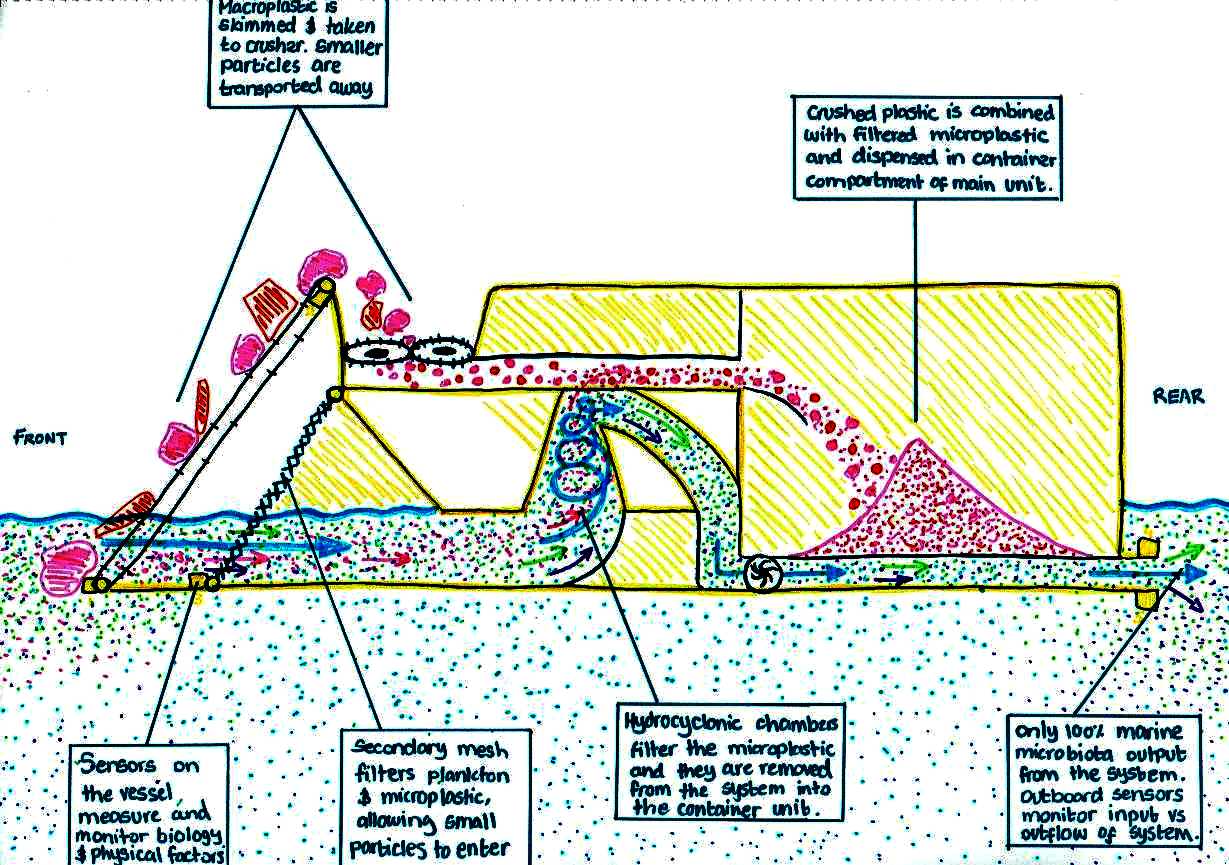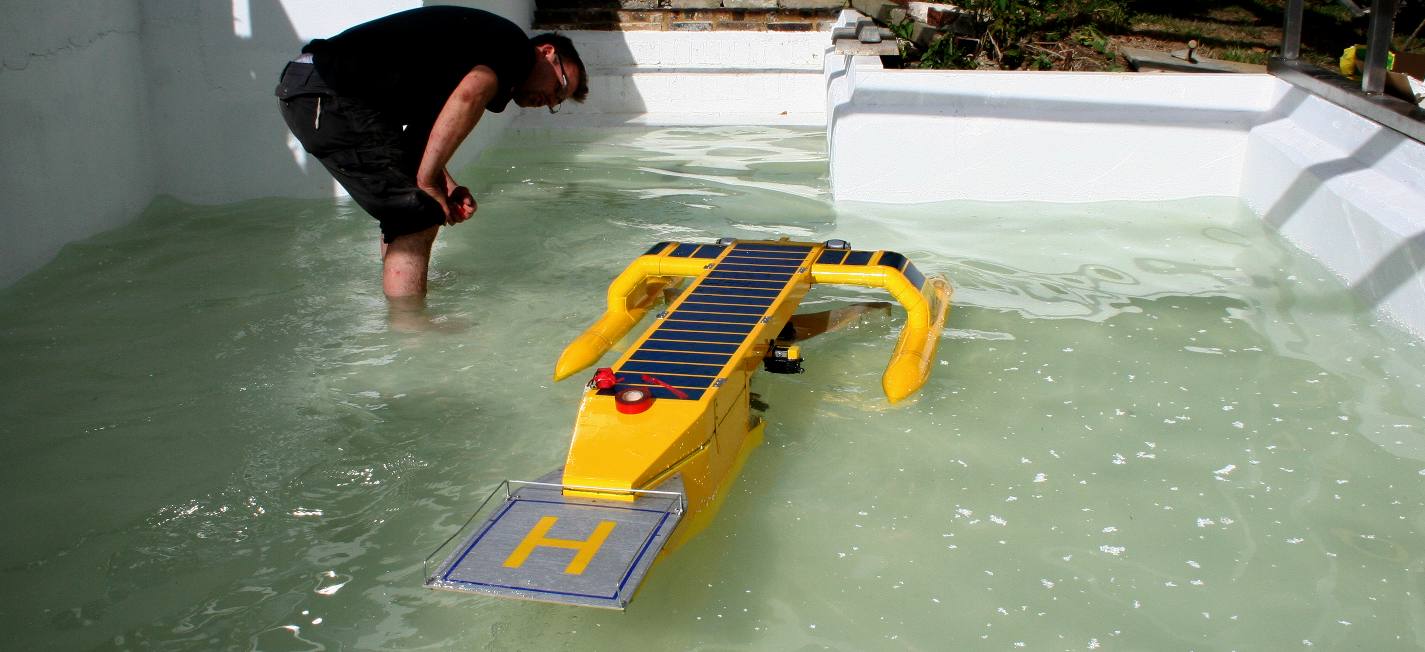|
HOW DO WE DO IT?
ABOUT - CLIMATE CHANGE - CONTACTS - DONATE - FOUNDATION - HOME - OCEAN PLASTIC - A-Z INDEX
INFOGRAPHIC - Though not the actual layout of the machinery, this diagram makes it easy to understand the three stages of filtration employed by a SeaVax ocean dustcart.
The question we are most often asked is how is it possible to filter plastic particles from seawater without harming marine life?
It's a difficult one, even for our engineers. The problem has baffled scientists for years. With debunkers more than happy to take pot shots at the concept without understanding how it is achieved. Now the subject of a patent application - where they are right - it is not obvious. Hence the term "Invention." To obtain a patent there has to be an inventive step, rather than a logical application of existing technology.
As you can see from the diagram above, SeaVax uses three physical stages of filtration to remove plastic. Each stage is designed to enhance collection and filtration of the next stage. In practice the first two stages are relatively simple and the third stage is where the clever stuff is:
1. The first stage in a much like other skimmers, where single use bottles, bags are crushed and compressed, and other larger plastic flotsam, including fishing nets and rope, is fed into a hopper and granulated by a shredder, then fed into a giant holding tanks, until the waste can be offloaded to a converted cargo ship while at sea (when fully developed). Waste has to be graded according to value for recycling. We want to get as much value out of the catch as possible.
2. The second stage is slightly more complicated where a mesh is variable in size and may be increased or decreased in net size to deal with what is ahead of the craft, to ensure that smaller marine life (zooplankton, shrimps, krill) does not pass through to the final stages and clog up the works. Zooplankton, Shrimp and krill are directed back into the sea while inorganic waste is collected and once again fed into the holding tank. We need to keep delicate fauna away from the
3. The third stage is where we need to be smarter, involving advanced robotics and programming, akin to object recognition, allied to arrays of sensors that generate digital limits to ensure that only plastic is collected - while marine biota is safeguarded. There is no mesh or net at this stage, simply spinning water and variable taps. But even then there is more. Without automation, we would not be able to select the right filters* at the right time and the means of selection is once again subject to a patent application. Patents can take up to four years to grant. In the UK green inventions may be accelerated. The Foundation is not making the application, rather a benefactor is doing this, supporting a professional inventor with a 100% track record of grants. The Foundation cannot afford to make patent applications, nor employ patent attorneys.
* A filter is any means to select one thing over another, rather than conventional physical filters.
No system can be 100% effective. For that reason SeaVax may shut down in extraordinary conditions, until fishing for plastic may safely resume.
The prerequisite to filtration is collector head design in order to maximize fleet sweep operations.
TESTING - Chris Close (Project Director) is seen here watching the SeaVax proof of concept boat filter plastic particles in our test tank facilities.
LINKS & REFERENCE
https://marine-conservation.org/what-we-do/program-areas/how-we-fish/destructive-fishing/ https://en.wikipedia.org/wiki/Overfishing https://www.worldwildlife.org/threats/bycatch
MARINE LIFE - This humpback whale is one example of a magnificent animal that is at the mercy of human activity. Humans are for the most part unaware of the harm their fast-lane lifestyles are causing. We aim to change that by doing all we can to promote ocean literacy.
This website is provided on a free basis as a public information service. Copyright © Cleaner Oceans Foundation Ltd (COFL) (Company No: 4674774) 2019. Solar Studios, BN271RF, United Kingdom. COFL is a charity without share capital. The names Amphimax™ RiverVax™ and SeaVax™ are trademarks.
|


